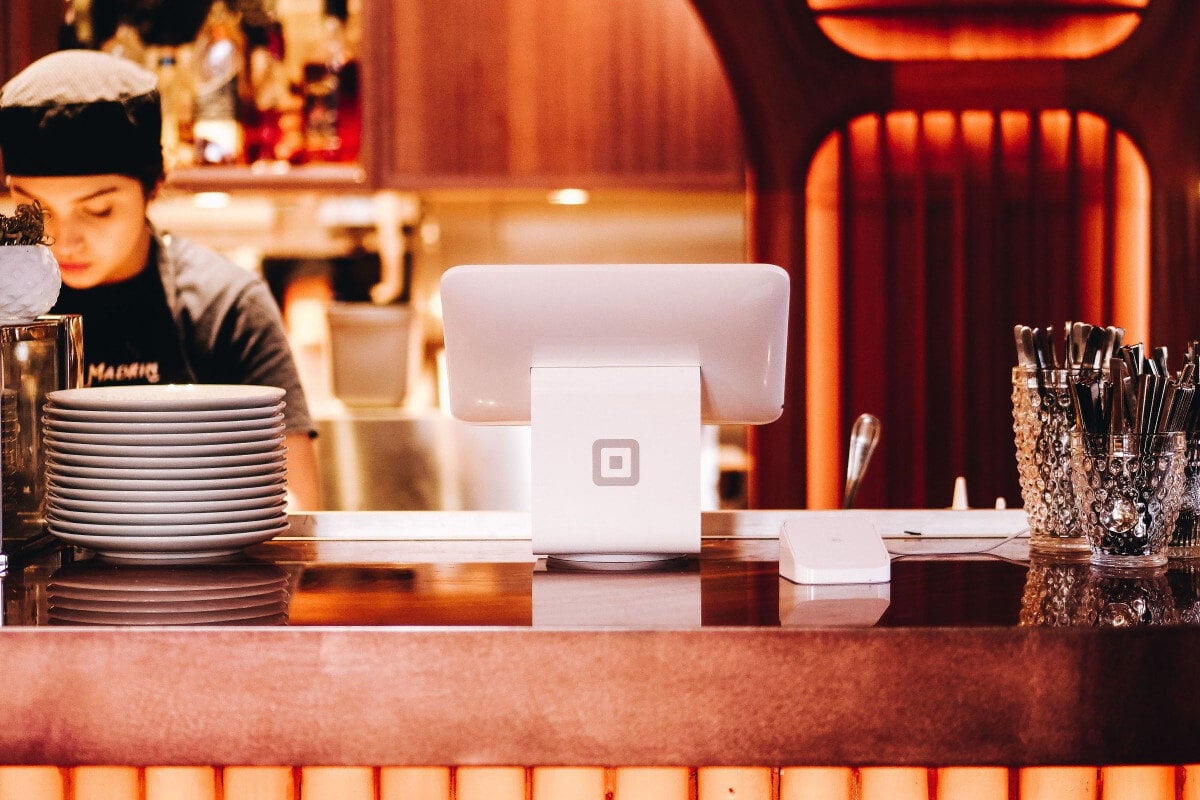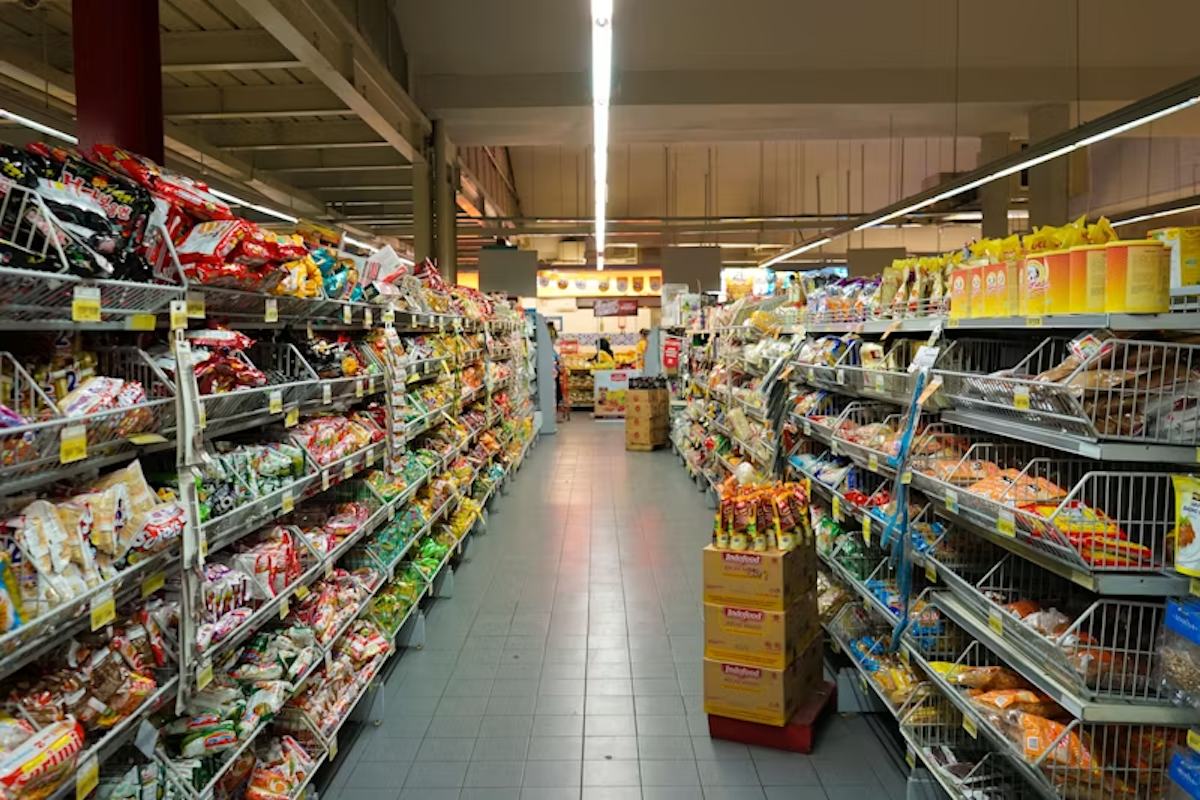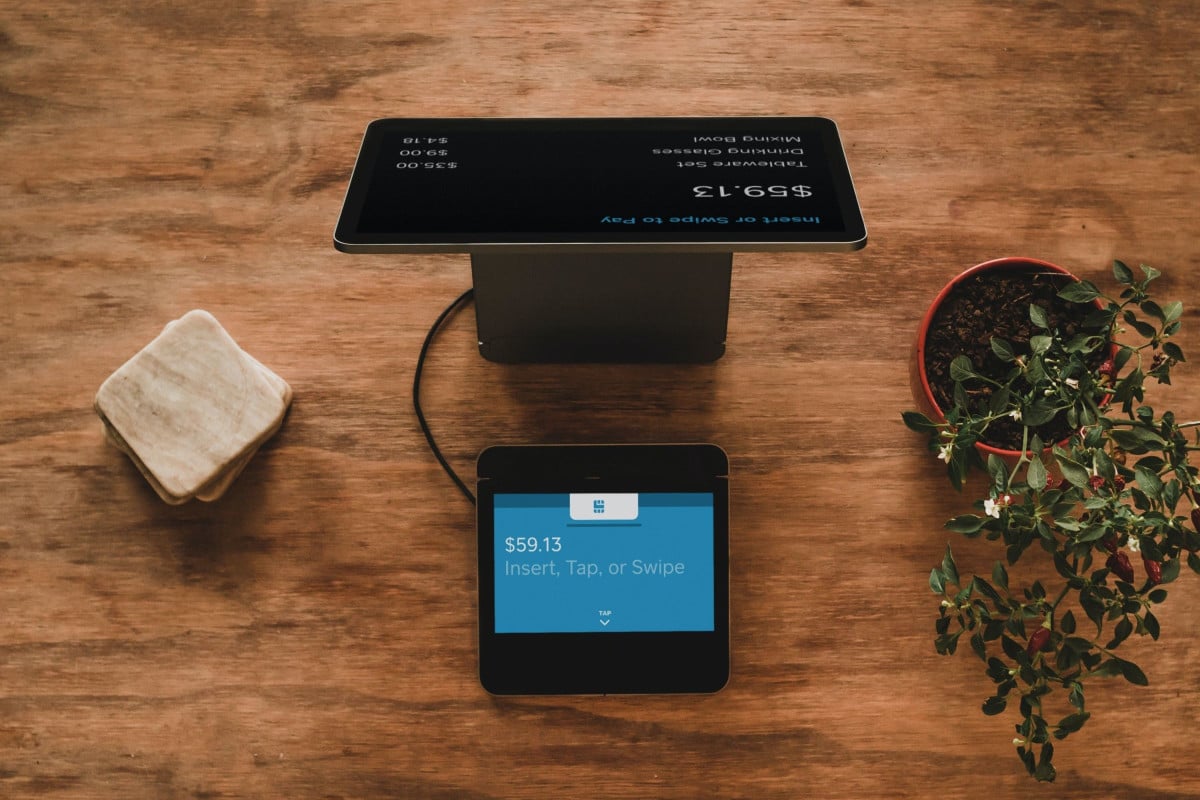15 min read
7 Year-Round Restaurant Marketing Campaigns to Drive Growth
Restaurant marketing campaigns drive foot traffic, boost sales, and retain loyal guests. From seasonal promotions to evergreen loyalty efforts, the...
Platform
What is Paytronix Guest Engagement Suite?
Combining online ordering, loyalty, omnichannel messaging, AI insights, and payments in one suite. Paytronix delivers relevant, personal experiences, at scale, that help improve your entire digital marketing funnel by creating amazing frictionless experiences.
A Complete Guest Engagement Suite
Online Ordering
Acquire new customers and capture valuable data with industry leading customization features.
Loyalty
Encourage more visits and higher spend with personalized promotions based on individual activity and preferences.
Catering
Grow your revenue, streamline operations, and expand your audience with a suite of catering tools.
CRM
Build great customer relationships with relevant personal omnichannel campaigns delivered at scale.
Artificial Intelligence
Leverage the most data from the most customer transactions to power 1:1 marketing campaigns and drive revenue.
Payments
Drive brand engagement by providing fast, frictionless guest payments.
Solutions
Paytronix Guest Engagement Solutions
We use data, customer experience expertise, and technology to solve everyday restaurant and convenience store challenges.
FlightPaths are structured Paytronix software onboarding journeys designed to simplify implementation and deliver maximum ROI.
Customer Success Plans (CSPs) are tiered service offerings designed to help you get the most from your Paytronix software, whether you prefer self-guided support or hands-on partnership.
Contactless Experiences
Accommodate your guests' changing preferences by providing safe, efficient service whether dining-in or taking out.
Customer Insights
Collect guest data and analyze behaviors to develop powerful targeted campaigns that produce amazing results.
Marketing Automation
Create and test campaigns across channels and segments to drive loyalty, incremental visits, and additional revenue.
Mobile Experiences
Provide convenient access to your brand, menus and loyalty program to drive retention with a branded or custom app.
Subscriptions
Create a frictionless, fun way to reward your most loyal customers for frequent visits and purchases while normalizing revenues.
Employee Dining
Attract and retain your employees with dollar value or percentage-based incentives and tiered benefits.
Order Experience Builder
Create powerful interactive, and appealing online menus that attract and acquire new customers simply and easily.
Loyalty Programs
High-impact customizable programs that increase spend, visit, and engagement with your brand.
Online Ordering
Maximize first-party digital sales with an exceptional guest experience.
Integrations
Launch your programs with more than 450 existing integrations.
Loyalty Programs
Deliver the same care you do in person with all your digital engagements.
Online Ordering
Drive more first-party orders and make it easy for your crew.
Loyalty Programs
Digital transformations start here - get to know your guests.
Online Ordering
Add a whole new sales channel to grow your business - digital ordering is in your future.
Integrations
We work with your environment - check it out
Tobacco Reporting
Comply with AGDC 2026 DTP Requirements
Company
We are here to help clients build their businesses by delivering amazing experiences for their guests.
Meet The Team
Our exceptional customer engagement innovations are delivered by a team of extraordinary people.
News/Press
A collection of press and media about our innovations, customers, and people.
Events
A schedule of upcoming tradeshows, conferences, and events that we will participate in.
Careers
Support
Paytronix Login
Order & Delivery Login
Resources
Paytronix Resources
Learn how to create great customer experiences with our free eBooks, webinars, articles, case studies, and customer interviews.
FlexPoint Service Catalog
Access FlexPoints are a cost-effective, flexible way to access our value-added services, to ensure you get greater impact from your Access software solution.
See Our Product In Action
E-Books
Learn more about topics important to the restaurant and c-store customer experience.
Reports
See how your brand stacks up against industry benchmarks, analysis, and research.
Blog
Catch up with our team of in-house experts for quick articles to help your business.
Case Studies
Learn how brands have used the Paytronix platform to increase revenue and engage with guests.
Unlock loyalty strategies that 3 out of 4 restaurants use to boost engagement by 40% without adding staff.
8 min read
Oct 24, 2024

Understanding key financial metrics is essential for restaurant owners, franchise managers, and c-store operators to drive business growth. One of the most important metrics to monitor is same-store sales, which measures the performance of existing locations over a specific period of time.
But what are same-store sales, and why are they critical for your business? More importantly, how can you increase them to ensure sustainable revenue growth? In this article, we demystify this concept and offer seven actionable strategies to help you boost your same-store sales.
Same-store sales—also known as comparable store sales or identical store sales—represent the same-store amount of revenue generated by a company’s existing locations during a specific time period, compared to the same time period from a previous year. This metric excludes revenue from new stores, providing a clear picture of organic growth.
The same-store sales figure gives a clear snapshot of how your established stores or restaurants perform year-over-year, offering insights into their organic growth. Focusing on your existing locations or stores allows you to assess the consistency of performance (or lack thereof) without the influence of newly opened or recently closed locations.
For example, if your restaurant had ten stores operating in 2023 and 2024, you’d compare their same-store sales figures from January 2023 against January 2024 with the same-store sales calculation and determine growth. This allows your business and each location’s manager to focus on the performance of your current storefronts.
Same-store sales may sound abstract, but the calculation itself is straightforward. Here’s the formula:
Same-store sales growth (%) =
(Current period sales – prior period sales) ÷ prior period sales × 100
For example, if your c-store generated $120,000 in January 2024 compared to $100,000 in January 2023, your same-store sales growth would be:
(120,000–100,000)÷100,000×100=20(120,000 – 100,000) ÷ 100,000 × 100 = 20%(120,000–100,000)÷100,000×100=20
A few important points:
Same-store sales growth is a crucial indicator of business health. Unlike total sales growth, which can be increased almost automatically by adding new stores, same-store sales offer insights into how well your existing stores are performing.
Effectively analyzing your same-store sales is key to making data-driven decisions that improve business performance.
Use point-of-sale (POS) systems and CRM platforms to gather detailed sales data on customer behavior, peak times, and product performance.
By integrating your analytics tools into your broader tech stack, you can track metrics like transaction volume, average order size, and foot traffic, providing a comprehensive view of your store’s performance. Additionally, benchmarking against industry standards reveals how your same-store sales figure compares to competitors.
Review your sales data on a monthly, quarterly, and yearly basis to spot trends such as seasonal fluctuations or changing customer preferences. Depending on your business’s momentum and plans for expansion, you may want to review sales data on a weekly basis, too.
A deep dive into same-store sales data helps you uncover and respond to shifts in consumer behavior, identify underperforming locations, and adjust strategies accordingly. Positive or negative same-store sales trends indicate the degree to which your locations adapt to market conditions, empowering you to make informed decisions to drive more sales.
Boosting same-store sales involves elevating customer experiences, optimizing operations, and using data to drive real-world outcomes. Focusing on customer engagement, marketing, and operational efficiencies can significantly improve comp sales growth while laying the necessary foundation for long-term profitability.
The following seven strategies focus on leveraging technology, loyalty programs, and menu optimization to drive repeat business and sustainable growth.
When used wisely, modern technology streamlines operations, enriches customers’ experiences, and drives repeat business. For example, a POS system integrated with a customer relationship management (CRM) tool provides valuable insights into customer behavior and preferences.
Implementing data-driven tech also helps predict future performance, allowing you to make proactive decisions that positively impact same-store sales.
Loyalty programs are the most effective way to drive predictable business for food service-oriented businesses like restaurants, c-stores, and retail outlets. Studies repeatedly demonstrate that repeat customers spend 67% more than new ones. Incentivizing your loyal customers with meaningful, customized rewards encourages repeat visits and increases average ticket size.
With Paytronix’s tools, loyalty programs can go beyond basic points to include tiered or milestone-based rewards. Here are three examples:
These tiered and automated strategies have proven results in real-world settings. For example, Break Time convenience stores worked with Paytronix to enhance their MyTime Rewards program with multiple tiers that reward both visits and spending. Personalized messages notify members when they are nearing a new tier or have reached one, encouraging greater engagement. This approach drove a 25.6% increase in customer spend, showing how a tiered loyalty program paired with automation significantly boosts revenue.
Your online menu is a powerful tool for driving sales. Regularly analyze and optimize your online menu to match customer preferences and market trends. Remove underperforming items and promote high-margin dishes to boost revenue. Finally, track which changes have the biggest impact on sales to ensure every adjustment drives growth and profits.
You can drive more sales by tailoring your menu specifically for delivery. Here are three ideas:
Adjust portion sizes or packaging to boost delivery margins while maintaining a great customer experience.
Well-trained staff can influence customer satisfaction and repeat business. Train your team to upsell high-margin items, improve table turnover, and provide superior customer service. The result is happier customers who are more likely to return, boosting your same-store sales.
Strategic marketing drives foot traffic and encourages existing customers to return. A well-crafted promotion that resonates with your target audience can generate immediate sales increases.
Well-timed promotions immediately impact your total sales generated, especially when combined with loyalty incentives and seasonal campaigns, including holiday gift card campaigns.
Data-driven decisions will drastically improve your same-store sales when you know how to wield them. Analyzing sales data can involve broad insights—like identifying your top 10 best-selling items—and more specific customer behaviors, such as tracking how particular customer segments' buying patterns change over time.
By understanding overarching trends and customer preferences, you can better adjust your staffing, menu offerings, and marketing efforts to meet demand and boost your same-store sales.
Customer experience is the heart of any business. This factor determines whether customers get what they expect, refer your products and services via word of mouth, and return for future purchases. Improving customer experience and delivering high-quality service encourages repeat visits, leading to more same-store sales across your locations.
Strategies to increase same-store sales look different depending on your resources. Here’s how businesses of various sizes can prioritize:
|
Business Type |
Budget Level |
What to Prioritize |
|
Small QSR |
Low budget, limited tech |
Manual loyalty punch card and simple menu rebalancing |
|
Mid-size c-store chain |
Mid-range budget |
POS-linked loyalty system and Paytronix online ordering |
|
Enterprise restaurant brand |
Larger budget |
Integrated CRM, personalization AI, and predictive analytics via Paytronix |
Regardless of size, the key is using the right tools to turn data into action. Smaller operators can start by tracking top-selling items and running targeted promotions, while mid-size and enterprise brands can leverage analytics to personalize offers, optimize staffing, and predict demand. Prioritizing initiatives that directly impact guest experience and repeat visits ensures your resources are focused on strategies that drive measurable same-store sales growth.
Growing same-store sales isn’t without its hurdles. Operators must contend with both external pressures and internal limitations, including these five challenges:
Fortunately, there are ways to address these challenges. Here are four ideas:
By acknowledging these obstacles and proactively addressing them, you stabilize performance and build resilience into your same-store sales strategy.
A recent McKinsey report highlights key consumer-facing and operational tactics that successful restaurant brands are employing to improve their same-sales revenues. Here are some of the most significant takeaways:
These strategies highlight the importance of data, customer engagement, and operational efficiency in driving sustainable same-store sales growth. Consider how you may implement one or more of the same approaches in your own business.
Toastique, a fast-growing gourmet toast and juice bar, uses the Paytronix platform to track same-store sales growth across locations and pinpoint which menu categories drive the most revenue. With those insights, the brand runs automated promotions that lifted loyalty membership by 87.5% in just four months and drove a 15% increase in visit frequency.
Predictive analytics also help Toastique adjust staffing and inventory, while centralized menu management saves three hours of work per store on every update. Together, these capabilities fuel both higher guest engagement and Toastique’s rapid nationwide expansion.
Once you've identified the strategies you want to use, it’s time to create a detailed action plan. Start small with pilot programs or localized efforts, monitor their success, and scale based on results. Here’s a simple step to step:
By continually assessing your company's same-store sales figures, you can refine your strategies and ensure that each location is maximizing its potential.
While implementing strategies, many businesses run into avoidable errors. Watch out for these four pitfalls:
Taking the right kind of action to watch one or more same-store sales metrics climb is critical to long-term business success. By leveraging technology, optimizing operations, and focusing on customer loyalty, you’ll drive sustained revenue growth across your existing locations. Start applying these strategies today to see tangible results in your business.
For a deeper dive into building customer loyalty and increasing sales, check out our free resource: Share the Love: Mastering Guest Engagement. This guide provides actionable insights on how to strengthen guest relationships and drive repeat business, helping you improve customer loyalty across your restaurant or c-store.

15 min read
Restaurant marketing campaigns drive foot traffic, boost sales, and retain loyal guests. From seasonal promotions to evergreen loyalty efforts, the...

15 min read
Convenience stores play a key role in the retail industry, generating billions in revenue each year. But how much do they actually make?

20 min read
Modern restaurant loyalty solutions focus on bringing guests back, strengthening long-term relationships, and providing a direct line for sharing...